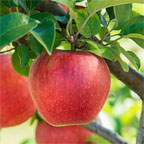- Q.Amaryllis Plants & Nut Grass - I have quite a few Amaryllis plants in my gardens beds and they are being over run by nut grass. ...
- Q.If Your You Spray Your Yard For Dandelion But Some Heads Still Grow And Blow Off Well They Still Germinate In The Treated Lawn - I used the spectracide concentrate weed stop you hook up to your hose to kill multiple dandelion in my yard,after ...
- Q.How To Keep Grass From Growing In Garden? - Grass keeps invading my herb garden
- Q.Mr - I plan to grow a bed of California Poppies in front of my house here in southwestern Canada. I have ...
- Q.Overgrown Garden-older Adults-clean Out To Renew Garden - We have been unable to attend our garden and now it is out of control. We have a few good ...
- Q.Should All Invasives Be Removed From Garden - I have several plants which have been identified as invasive - trumpet vine, gooseneck loosestrife, and sweet woodruff to name ...
- Q.How To Get Rid Of WEED FILLED SOIL Ready For Turf - We moved into a new property and the back garden was just soil. We didnt do anything with it for ...
Q.Amaryllis Plants & Nut Grass
I have quite a few Amaryllis plants in my gardens beds and they are being over run by nut grass. I have read you can treat nut grass naturally with sugar and i was wondering if this will hurt my Amaryllis plants.
- A.
Unfortunately, getting rid of these pests is not easy. Hand pulling will be your best bet using natural methods. It takes persistence. There are selective herbicides that will only target the nut grass, and leave the amaryllis alone. This requires knowing the species. They are also synthetic, however.
Another option will be to dig them all up when they are resting after flowering. This can be a slowdown in growth, or dieback of leaves. Once they are dug up, you can treat the area, or boil water and treat the area daily until nothing grows. Once all weeds are killed off, you can plant again. This is the method that I recommend for true weed control. Continuous boiling water will destroy the weeds, while keeping the soil intact and without contamination.
Was this answer useful?00
Q.If Your You Spray Your Yard For Dandelion But Some Heads Still Grow And Blow Off Well They Still Germinate In The Treated Lawn
I used the spectracide concentrate weed stop you hook up to your hose to kill multiple dandelion in my yard,after spraying the white heads still appear within that day are two days later, when they blow off will they still germinate in your treated yard or will they also die off
- A.
Likely, yes. You can kill the next generation off before they are able to grow and flower, however. Just treat the yard again according to the instructions on timing on the container.
This article will offer more information on different ways to kill them off:
https://www.gardeningknowhow.com/edible/herbs/dandelion/dandelion-control.htm
Was this answer useful?00 Q.How To Keep Grass From Growing In Garden?
Grass keeps invading my herb garden
- A.
Grass is always a problem. You need to have a barrier that goes a few inches into the ground to keep the grass from going under the barrier. Just laying rocks or bricks along the edge may not stop it. Here are some ideas:
https://www.gardeningknowhow.com/ornamental/flowers/fgen/flower-bed-edging.htm
https://www.gardeningknowhow.com/garden-how-to/design/lideas/ideas-for-stone-garden-edging.htm
https://www.gardeningknowhow.com/special/spaces/creative-edging-borders-and-more.htm
Was this answer useful?00 Q.Mr
I plan to grow a bed of California Poppies in front of my house here in southwestern Canada. I have seen lovely beds of these bright orange flowers growing in my neighbourhood. I dug up all the weeds including the roots, planted 800 poppy seeds, covered them with 1/4 inch of good soil and watered daily. The seeds sprouted many poppy plants, but many more Hairy Crab Grass plants also appeared, completely surrounding all the poppies. My question: Is it best for the poppies if I remove all the crab grass around them? Or would it be less harmful to the poppies if I let them grow in amongst the crab grass?
- A.
I just wouldn't want you to harm your poppies! With some manual control they should do fine! I'm dealing with the same in my garden. Diligence is key!
Was this answer useful?00 - A.
It will kill your poppies, as well. After this treatment, you would have to make the soil usable again, and flush it out, adding compost after if you choose to do this.
Was this answer useful?10 - A.
I would remove what you can without disturbing the roots.Definitely remove anything that is further away from the poppies, and I would start there, but move towards them until you see pulling on the poppies.
https://www.gardeningknowhow.com/ornamental/flowers/poppy/growing-poppy-flowers.htm
Was this answer useful?10 - A.
OK. I won't use baking soda. Thanks!
Was this answer useful?00 - A.
I have read that baking soda discourages crabgrass. Does it have the same effect on California Poppies? Or can I use it to discourage the crabgrass and encourage the poppies?
Was this answer useful?00 Q.Overgrown Garden-older Adults-clean Out To Renew Garden
We have been unable to attend our garden and now it is out of control. We have a few good plants but most of it is weeds. Should we have someone dig up after we have saved the plants we want. The weeds reach to China!!
- A.
That might be the quickest option. After this, there will still be things that you might want to do. Treat the area with boiling water over a few days to get rid of any living stragglers. If you can, cover with a clear or black tarp or covering. Many people prefer clear, but black is a second option. These articles will explain in more detail:
https://www.gardeningknowhow.com/plant-problems/weeds/boiling-water-and-plants.htm
Was this answer useful?00 Q.Should All Invasives Be Removed From Garden
I have several plants which have been identified as invasive - trumpet vine, gooseneck loosestrife, and sweet woodruff to name a few. I keep them in check but should I remove them completely from the garden?
- A.
If they are invasive and you keep them in check, you don't need to remove them. If, however, they are branded a noxious weed in your area and are displacing the native flora, it would be beneficial to the environment to remove them. None of yours mentioned are on the exotic weed list for Illinois. Trumpet creeper is considered aggressive, but not necessarily invasive.
https://www.uaex.uada.edu/yard-garden/resource-library/plant-week/gooseneck-loosestrife-7-2-09.aspx
https://www.illinoiswildflowers.info/trees/plants/trumpet_creeper.htm
https://hort.extension.wisc.edu/articles/sweet-woodruff-galium-odorata/
Was this answer useful?00 Q.How To Get Rid Of WEED FILLED SOIL Ready For Turf
We moved into a new property and the back garden was just soil. We didnt do anything with it for 9months and weeds and all sorts of stuff grew in it. We used a strimmer to get the worst of it down but there are many prickly and horrible weeds all over the garden. The garden is 10m x 10m. My question is: What is the best gardening tool to tackle the weed filled mess? Would an electric Tiller / rotovator work? Presumably this will tear the soil to pieces and tear all the weeds out....then what? I was thinking if I get some weed barrier and keep the garden covered up for a few weeks, all the churning of weeds and soil should decompose due to lack of sunlight etc, ready for fresh turf (obviously once prepped and levelled). Any advice would be good. I have attached an example photo
- A.
You have some options here. If you want to be sure to kill all the weeds, you can spray the whole area with a glyphosate product and wait about three weeks to give it time to work. (The temperature must be above 50 degrees F for it to be effective.) Read and follow all label instructions.
If you want to avoid chemicals, you can rototill the area two or three times, raking out the weeds and debris between each tilling. The issue here is some of the weeds are likely tough perennial weeds that will still come back if any of the root remains in the soil.
Another option if you are not in a hurry is to wait for warmer weather then solarize it. Cover the area with clear plastic and lay bricks along the edges to hold it down. Leave it in place for several weeks to allow the sun to cook it and kill the weeds.
Was this answer useful?00



